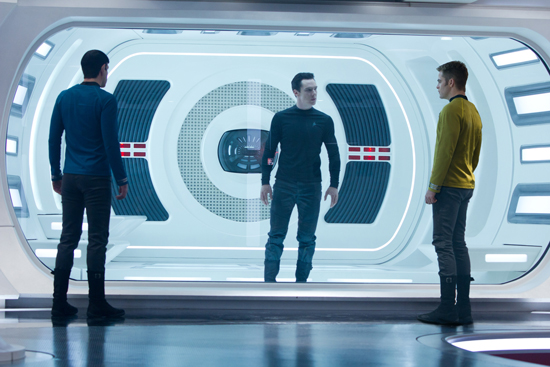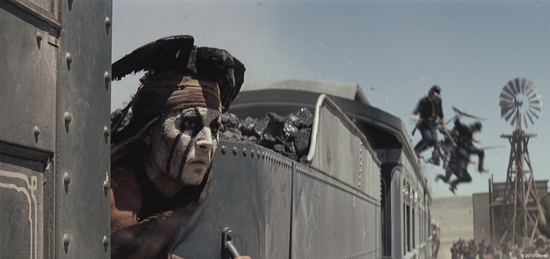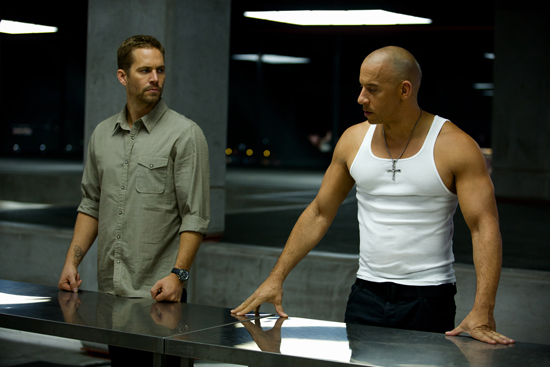As more bad news swirls around Kodak, there’s still time to point out that film remains an important medium for motion pictures. Six of last year’s nine Best Picture nominees, for example, were shot on film.
But in this industry, as in all others, money talks, and digital has been judged cheaper than celluloid. Studios and exhibitors are dismantling the businesses that make and show film, replacing them with technologies whose flaws and drawbacks may not be immediately apparent. The digital juggernaut gains momentum every day, whether it’s new streaming deals that send hundreds of film titles to limbo or Adobe abandoning software sales for a cloud-based subscription model.
Speaking of money, May marks the start of Hollywood’s blockbuster season, which traditionally accounts for 40% of box-office revenue. It’s a season in which franchises and tentpoles from the Big Five studios jockey for a shrinking customer base. Disney and Marvel Entertainment have already sent out Iron Man 3, which set a second-best all-time opening record in part by charging viewers extra to watch it in post-conversion 3D. Over the Fourth of July weekend, Disney will release The Lone Ranger with Johnny Depp.
Universal is pinning its hopes on Fast & Furious 6, opening it against Warners’ The Hangover Part III over Memorial Day weekend. Paramount, meanwhile, has Star Trek Into Darkness, a sequel to the well-received 2009 franchise reboot.
What’s telling about Star Trek, Fast & Furious, and The Lone Ranger—movies that have a good chance of grabbing a significant portion of the summer’s box office—is that they were all photographed on film.
“We shot all the exteriors on film,” Lone Ranger producer Jerry Bruckheimer said at a press event in New York this April. “We couldn’t get the blacks we wanted on digital. The interiors were done digitally because lighting was easier.” Bruckheimer agreed that film still provided the best visual look. “But film will be gone in two years.”
“There’s always going to be a special relationship between humans and film,” Justin Lin, director of Fast & Furious 6, said from his office in Los Angeles. He had to fight efforts by Universal to use 3D. “If Fast & Furious was going to be 3D, you would have to design the franchise very differently, visually.”
Accountants wanted Lin to use digital cameras for Fast & Furious 6, but as the director pointed out, “For a big film like this, film is the cheapest of all costs. And it’s crazy, but it’s getting harder and harder to actually get film stock, to process it now. But it’s the only way for me to do this franchise.”
J.J. Abrams, the director of Star Trek Into Darkness, also resisted attempts to make the movie in 3D. “I was really against it at first,” he said. But after tests with stereographer Corey Turner, Abrams agreed to a post-conversion. “I would not want to do it on any movie, but certainly for this I thought it was the absolute right kind of movie to use that technology.”
What Abrams wouldn’t do was shoot Star Trek Into Darkness on digital. “I wouldn’t say I was pressured, but I know it was something that the studio would have preferred. But I knew that it was not the best thing for the movie.”
Abrams shot the 2009 Star Trek on film as well. “We got a wonderful analog reality to it, which was especially important for a movie that had quite a bit of digital effects,” he explained. Abrams insisted on shooting anamorphically, which ruled out photographing in 3D digital, and also wanted to use IMAX large-format equipment (which makes up about 30 minutes of the finished film).
“IMAX allowed us to shoot at a preposterously high resolution, which gave the movie I think an amazingly immersive and stunning look that we could not have gotten digitally,” Abrams added.
Abrams and Lin lament the passing of film, but they’re not Luddites about digital. “I am in no way anti-digital,” Abrams insists. “I embrace it, I love it, I own some RED cameras.”
As for Lin, “I’m not adverse to digital, but it has to be the right aesthetic, the right story. I ‘get’ digital if I’m shooting Better Luck Tomorrow, which I did for $250,000. I could shoot that film now for $25,000.”
But after he finished shooting Fast & Furious 6, Lin encountered problems in postproduction. “I had a lot of issues when I was in London, because a lot of visual effects are done digitally. It’s actually not taken into account that your stuff is shot in film so we had to go and kind of create a new language to be able to bring it back to the film world.”

(Left to right) Zachary Quinto is Spock, Benedict Cumberbatch is John Harrison, and Chris Pine is Kirk in Star Trek Into Darkness, from Paramount Pictures and Skydance Productions.
And as Abrams points out, digital is still trying to look like film. “Film is really the benchmark for the best possible look. I’m sure there are those who say the benchmark shouldn’t be this, because look at what we’re able to do here. But there’s something inherently right about the way film looks to me. Film is still the highest quality, the warmest, most relatable image.”
Even if, or when, digital cameras catch to photochemical cameras, if the processes reach a point where, as Abrams admits, he wouldn’t be able to tell the difference, “Film does work. It does function, and it functions great. A camera is a tool. Just the way you have a workshop with a number of different kinds of tools for the job, film is one of them. What will be heartbreaking and what seems inevitable, is that that tool is going to go away.”
“My dream will be to continue to use film for every movie I do,” Abrams added. “One of the reasons I really wanted to do Star Trek Into Darkness this way was that I was aware it may be the last time I’m ever given the opportunity to shoot on film.”





